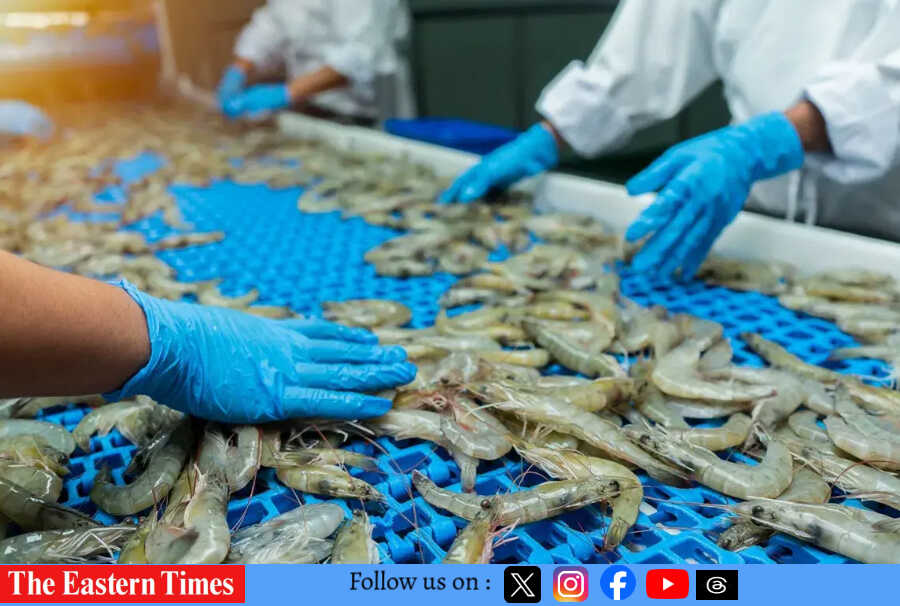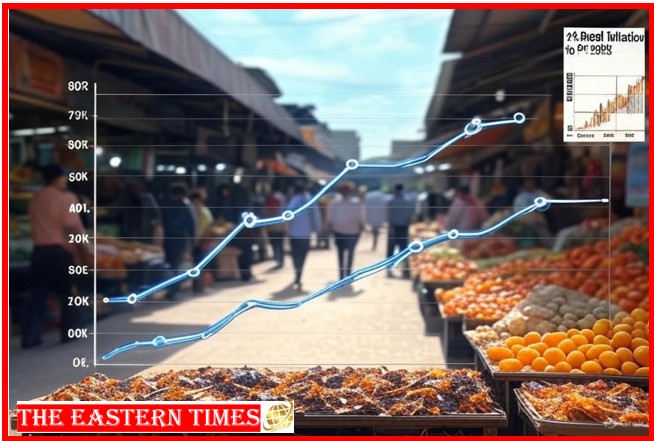On India’s southern coast, shrimp farming once brought prosperity. For two decades, V. Srinivas from Veeravasaram village thrived by cultivating shrimp in saline ponds, as India grew into the top supplier of shrimp to the United States. Now, U.S. President Donald Trump’s 50% tariff threat is pushing him and thousands of others toward crisis.
Tariff Shock Disrupts Profits
Andhra Pradesh, the state that supplies the largest share of India’s shrimp to the U.S., has invested heavily in aquaculture. Farmers poured millions of rupees into building modern farms and producing high-quality shrimp.
But after Washington imposed a 25% tariff on Indian imports — with another 25% levy set for August 27 — exporters slashed the prices they pay to farmers by nearly 20%, wiping out profits.
“I am contemplating if I should switch to fish farming,” said Srinivas, who has already mortgaged his property and owes $45,800 in loans. “These prices will not help me repay my debt.”
A $7.4 Billion Industry at Risk
The U.S. is India’s biggest seafood market, with supermarket giants like Walmart and Kroger among buyers. Last year, India exported seafood worth $7.4 billion, with shrimp making up nearly 40% of that figure.
Now, the tariff hike has put the industry in “troubled waters.” By comparison, Ecuador, India’s main rival, faces only a 15% tariff, giving it a sharp competitive advantage.
Andhra Farmers on the Edge
Andhra Pradesh has around 300,000 shrimp farmers, most of whom sell to exporters shipping to the U.S. According to Pawan Kumar, head of the Seafood Exporters Association of India, many U.S. clients have already paused orders. Exporters are unable to absorb the tariff and are instead cutting rates offered to farmers.
While India also exports shrimp to China, Japan, and the UK, diversifying to these markets will take time. “That’s not going to happen overnight,” Kumar said.
Six of 12 farmers interviewed in Andhra said they may suspend shrimp farming and shift to fish farming, vegetable retailing, or other small businesses. The rest hope to wait out the crisis, though each shrimp cultivation cycle takes two months and requires significant investment in electricity, feed, and land rentals.
“On good days we only see 20-25% profit,” said Gopinath Duggineni, a local union leader in Ongole city. “With tariffs eating into that, nothing is left. We will ask the state government for financial support.”
Ecuador Eyes Opportunity
Ecuador is closely tracking the situation. “India’s exports are highly concentrated in the U.S. … If India steps back, that’s where we can gain ground,” said Jose Antonio Camposano, president of Ecuador’s National Chamber of Aquaculture.
Still, Ecuadorian producers are cautious about expanding investments, given uncertainty over whether New Delhi and Washington will eventually strike a tariff deal.
The Road Ahead
For shrimp farmers in Andhra Pradesh, Trump’s tariffs threaten not just profits but livelihoods. With debts mounting and prices falling, many may be forced to abandon shrimp farming — leaving India’s once-booming seafood industry struggling to stay afloat.
Highlights:
Trump’s 50% tariff threatens India’s $7.4B seafood industry.
Andhra Pradesh shrimp farmers face price cuts and mounting debts.
Ecuador gains competitive edge with lower U.S. tariff rates.
Connect with us through social media
Facebook:
 https://www.facebook.com/profile.php?id=61577015427068
https://www.facebook.com/profile.php?id=61577015427068X (Twitter):
 https://x.com/tet_editor
https://x.com/tet_editorInstagram:
 https://www.instagram.com/the_eastern_times_/?next=%2F&hl=en
https://www.instagram.com/the_eastern_times_/?next=%2F&hl=enMail (Email):
 contact.theeasterntimes@gmail.com
contact.theeasterntimes@gmail.com

















Leave a Reply